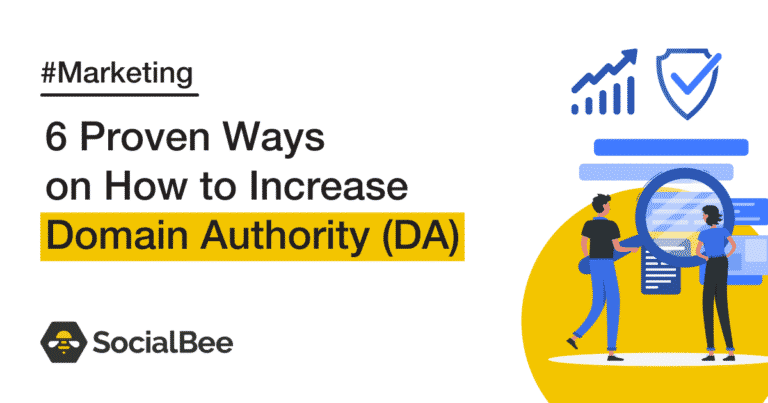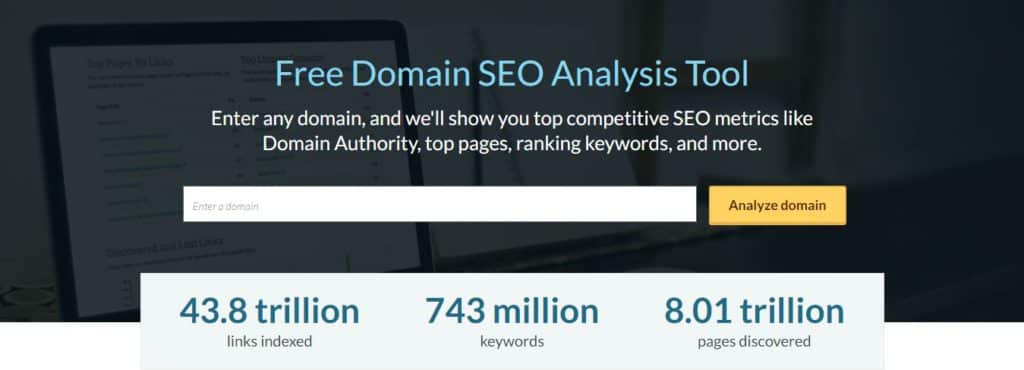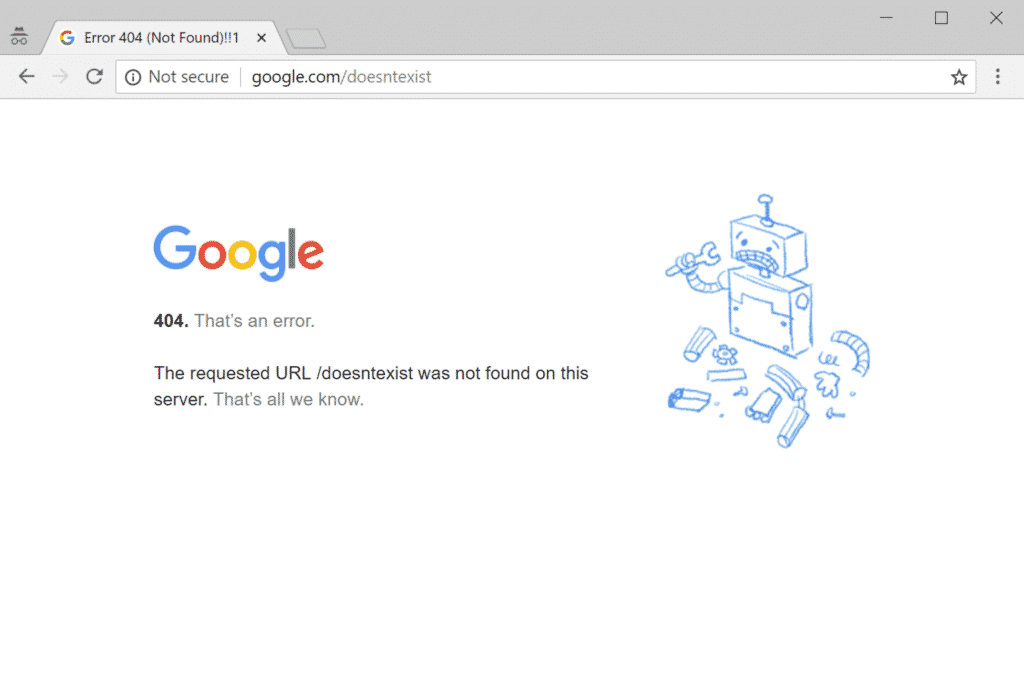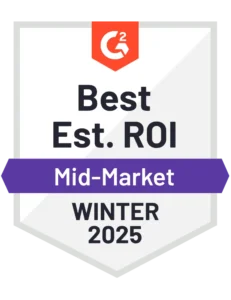
Content Writer
You must’ve heard about search engine optimization (SEO) at least once. As you start getting more and more familiar with the subject, you start hearing about other terms related to it, such as domain authority. And how an increase in domain authority can bring you more guest posts and better exposure.
And you’ve guessed it right. The lucky term we’re going to unravel in this article is domain authority (DA). If you’ve never heard about it before, we’ll give you a bit of insight into what domain authority is all about.
Before diving deeper into the subject, there’s one important mention to make. Increasing domain authority is not something that happens in a few minutes or a few days. In the end, it’s an entire process of constantly improving elements. Elements such as your content, your page, or your social media marketing plan. Therefore, you’ll be in the process for a long time.
Now that we got this out of the way, we can jump right in and explore the ways in which you can increase domain authority.
And we’ll start by asking…
What Is Domain Authority?
Domain Authority (also known as DA) is a metric used to calculate a website’s ranking score. Developed by Moz, the search engine ranking score offers you insight into the relevance of a website. Thus, it shows you if a website is bound to rank in the search engine results pages (SERPs).
The scores related to Domain Authority range from one to 100. As a starting point, the higher the score, the greater the chance of obtaining a good ranking. Even so, the scale should not be treated as a grading scale. The key here is to obtain a ranking score on the one to 100 scale that places your business in front of your competitors.
Calculating Domain Authority
The score is calculated based on an algorithm developed by Moz, one being the worst score, and 100 the best score. Among the factors used for calculation, examples include the total number of links or linking root domains. It’s also important to mention that domain authority is not a Google ranking factor, according to the Moz website.
Another important mention is that domain authority is not an absolute metric, but rather one that is comparative.
Increasing Domain Authority
There are a few aces up your sleeve you can use to increase domain authority. So, let’s take a look at them:
1. Know Your Competition
Competition is everywhere. Knowing who your direct competitors are is useful for your plan to increase your domain’s authority. But how do you figure out who your competitors are? Well, the answer is by searching for keywords.
The secret is to search for keywords that you’re already ranking for. Or to search for keywords you want to rank for and check the websites that have content similar to yours. Of course, the results will involve bigger companies, and smaller ones as well.
Bigger businesses will have bigger domain authority, so looking at those first might not be the best idea. Once you’ve identified the competitors who post content similar to yours, there’s one more thing to do. You can check their domain authority score and start focusing on bringing more visibility to your business.
Collaborating with experts in your industry can further enhance the quality and relevance of your content. For instance, working with an SEO company like Loopex Digital can offer specialized expertise in optimizing your online presence for targeted keywords, thus further solidifying your competitive edge in the market. By leveraging their experience and strategies, you can effectively navigate the complexities of search engine optimization and propel your business towards greater visibility and success.
2. Link to Good Content
It’s no secret that good content will never go out of fashion. And for good reason, as good content is a must if you want to boost your domain authority.
If building links were as easy as linking to chunks of words, we wouldn’t be discussing this topic. So, how do you go around building links?
First, you need to determine how relevant the content is to your audience. If your company focuses on producing shoes, a piece on the importance of using the right bait when going fishing will not help. If we’re still at it, quality over quantity is another principle you need to take into consideration when putting together your content.
This brings us to the importance of the keywords you use. It might be tempting to try and drive more traffic to your website through keywords. The problem appears when you’re subtly sprinkling keywords in your text and they have nothing to do with your business. Unfortunately, that’s a no-go if you want a domain authority improvement.
Last, but not least – get creative! Content is not tied to one format only, and this flexibility can only help your business. How? Videos and quizzes are known to drive traffic to your website. At the same time, though, a well-written blog post can also bring you the same results.
Using infographics is also an idea if you want to drive traffic. The best part is that you can mix them all – not at the same time, though. Balance your content, make it qualitative, and watch how your domain authority increases.
3. Sharing on Social Media
Sharing is caring, and this principle will apply especially to social media platforms. Creating great content is one thing. Sharing it will help you get your message across. Good content is not meant to sit by itself on your website, with no promotion. And what better tool to use than your social media presence?
Having a social media marketing plan in place can increase your domain authority by having more people clicking on your blog posts. Sharing on social media is just one click away – and the more people it reaches, the better.
A small social media button can also go a long way. Make sure you include a button for the most popular social media platforms in your article. Thus, your audience can click on the Facebook icon, for example, and have it on their page in an instant.

SocialBee: Your AI-powered social media management tool
4. Focus on Technical SEO
An increase in domain authority relies on some details that have to do with the user experience. But do not worry, as there’s nothing too complicated to dive into when it comes to technical SEO. Shortly, the list looks like this:
- 404 messages
- Optimization
- Layout
- Speed
- SSL Certificate
You can start by checking your top pages. Make sure that they’re active and accessible, and no 404 messages are popping up. If you notice this, go in for a fix or redirect for those pages.
Image source: Kinsta
Your website also needs to be mobile-friendly. Nowadays, most people consume their information on a mobile device. A website that isn’t properly optimized will not bring you the desired results. A page that loads accordingly on a mobile device will look better and will not have the user guessing where the “Sign up” or “Log out” buttons are. Keep it simple!
Complex designs are great for the visual effect. But when you’re in a hurry and you want to identify the button that allows you to find the rest of the blog posts, it might make it difficult. Have a simple, yet effective structure of a website, for starters. Also, try to always be on the lookout for any essential buttons that might be missing.
Keeping it simple also relates to how fast your website loads. Always test the loading speed of your website and make sure you don’t have any elements such as too many widgets that could slow down the processes. A website that loads in one minute will not keep your audience happy.
Last, but not least – website security is crucial. A secure website helps build trust and it’s important to have it especially if there’s a data transfer going on. You’ll know if your website is secure if you notice the lock at the beginning of the page and the HTTPS:// format. If you want to higher search engine ranking and boost customers’ confidence then, as a site owner should buy an SSL certificate. Understanding how to fix SSL certificate issues is crucial in achieving this goal. When a customer checks that your site is authenticated, they would like to visit it frequently.
5. Check On-Page SEO
On-page SEO is a bit different from the technical one. Essentially, when checking your on-page optimization, you do it to ensure that your content is perfectly optimized for search engines.
We’ll take a look at it here:
- Image optimization
- Image alt tags
- Proper title tags
- Optimized meta description
- Linking (external, internal)
Image optimization refers to adding a proper name to your images. An image called “Screenshot_13” or “IMG1” will not give away too much information.
Image alt tags are a description of the image you’ve added. By description, we don’t refer to a whole chunk of text, but rather to some information that is then used by SEO. They still need to figure out what your image is all about, right?
Title tags are pretty self-explanatory, but the title of your page is also vital for your audience’s experience. However, your title should not exceed 70 characters. Similarly, your meta-description should not exceed 160 characters. All of these can be found in an SEO checklist that tells you each step to take for making your efforts successful.
Internal linking means linking to articles that have been previously published on your blog or website. Thus, you can drive traffic to the pages you’re linking to and also allow your readers to see more of your content. External linking, on the other hand, concentrates on linking to articles published on other websites.
6. Review Your Website
Taking a look at your website and the links you have is also helpful in increasing your domain authority. Make sure that your website doesn’t have too many spam links or links from sites that have yet to be indexed. Also, sites that don’t have appropriate content can be harmful to your domain authority.
Also, changing URLs on your website might cause backlinks to break. Backlinks are links pointing towards your site from any website that has a high ranking score. If a website has linked to an older URL of yours, chances are the audience will be redirected to an error page. And the 404 error page is one element that doesn’t increase your domain authority.
You should also take a look at the links that drive traffic to your website. In this way, you can figure out which links are useful for your website, and which might have a negative impact.
Final Thoughts
Increasing your domain authority is not going to happen overnight – as much as we’d want that to happen. Even so, all the steps described above are the best to make it happen. What’s also important to keep in mind is that just having a high domain authority isn’t the only thing that matters.
Having a higher domain authority than your competitors is better for your business. It’s also going to require elements such as quality content, a strong social media presence, or SEO.
It’s time to make it all happen, and you have all you need in this article! A good social media presence and article writing are two of the ways through which you can improve your domain authority. And SocialBee can help you out with those.
Are you still wondering why improving domain authority matters? There’s one last reason to share with you: it helps your business rank higher. Thus, it gives your business better visibility. If you’re interested in knowing more about how SocialBee can help you, you can try our 14-day free trial.
















